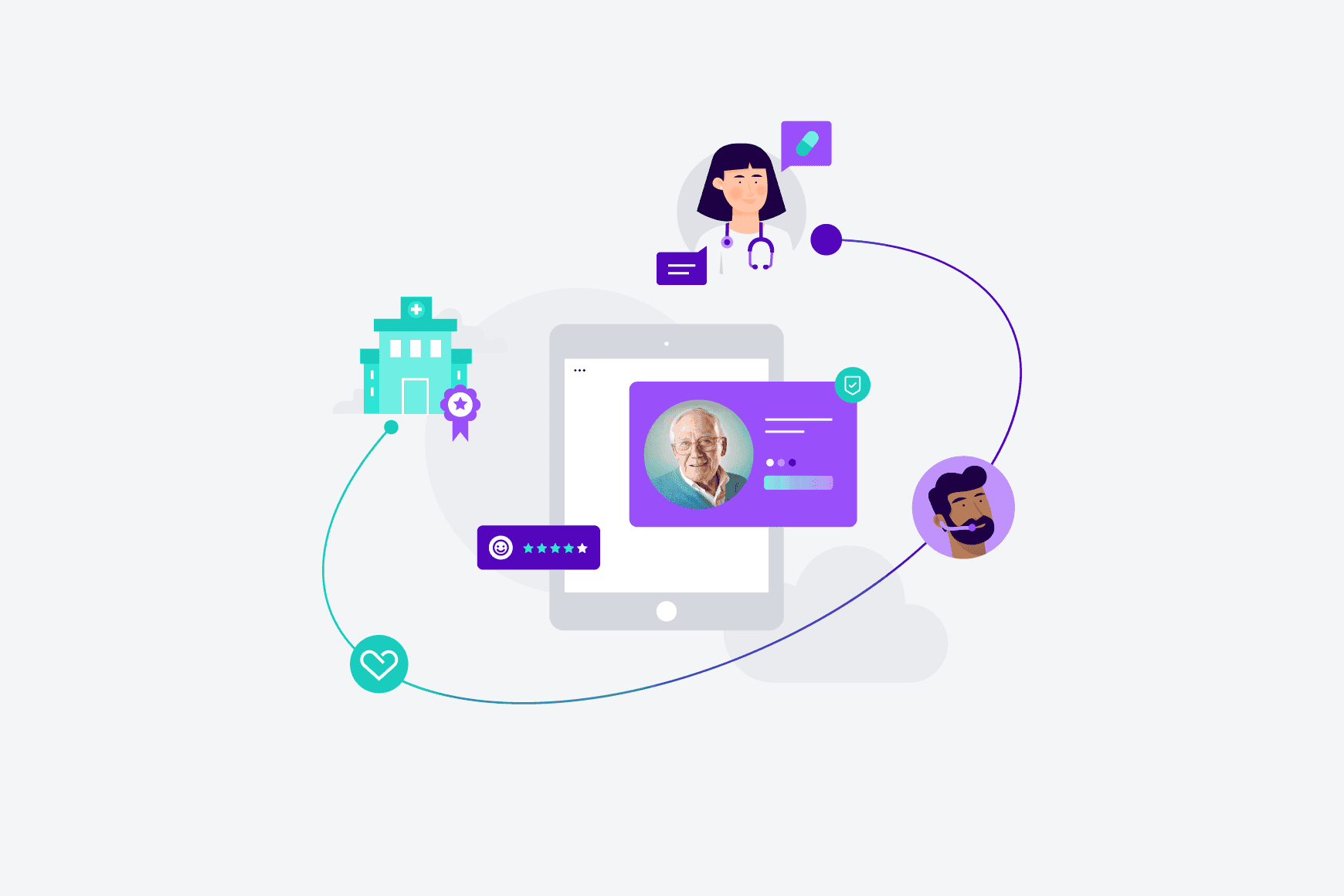Improved patient experience is more critical than ever to healthcare organizations

By Greg Miller
0 min read

This post was first published in HealthITAnswers
COVID-19 delivered an unambiguous message last year to healthcare providers: Digital transformation can no longer be delayed.
Providers heard that message loud and clear. In response to the events of 2020, 60% of healthcare organizations are adding new digital projects, while 42% are accelerating some or all existing digital transformation plans, according to professional services company BDO’s 2021 Healthcare Digital Transformation Survey.
More specifically, the BDO survey shows, the top three areas in which providers are spending their technology dollars are: telemedicine (75%, up from 42% in 2019), electronic health records interoperability (64%, up from 43%), and patient portals (56%, up from 50%).
The sharp increase in telemedicine technology investments over last year is understandable given how the pandemic fueled the rapid adoption of telemedicine among providers and patients. So too is the added urgency to attain interoperability, both to enhance care coordination and enable value-based care.
But why are providers putting such a high priority on building out their patient portals? The answer lies in the growing recognition among healthcare executives and investors that their organizations must consistently provide a superior patient experience (PX) across the care journey – or lose business to competitors that do.
While investments in patient portals and digital messaging systems are up, these technologies won’t solve the PX challenge facing healthcare systems today because they are too passive and limited. Today’s healthcare consumers demand far more from provider and payer organizations than the ability to view bills online and leave voice messages about treatment or coverage problems.
Instead, healthcare organizations eager to deliver a superior PX must embrace technologies that leverage artificial intelligence (AI) and machine learning (ML) to create personalized encounters that empower patients and build greater brand value.
One such technology is an AI-powered, cloud-based contact center that enables healthcare consumers to get support from their providers and health plans whenever, wherever, and however it’s convenient for them. Such an approach can go beyond simple issue resolution to automating key interactions and assisting care coordination.
Healthcare consumer revolution.
The patient experience encompasses far more than clinical care. It includes every interaction a healthcare consumer has with a healthcare organization throughout the patient journey, from setting an appointment to seeing a clinician to seeking post-care information to receiving a bill.
Patients tend to judge the entire healthcare system based on each experience in the journey. And their expectations are higher than ever thanks to the increasingly powerful digital tools at their disposal and their positive experiences with digitally savvy companies in other industries, such as retail and entertainment.
In a recent survey, two-thirds (67%) of patients said even one poor customer experience would have a negative impact on their loyalty to a healthcare organization. The good news – at least for forward-looking healthcare organizations – is that 75% of healthcare consumers surveyed said they are more loyal to providers that invest in improving PX.
In an eBook on The Power of the Patient Voice, NEJM Catalyst says one way to empower patients is to “make their access to services a much smoother process.” Indeed, the fragmented nature of the U.S. healthcare system can make it extremely difficult for patients to navigate.
To avoid poor experiences – to get every touchpoint right – requires healthcare organizations to embrace a user-friendly platform that eliminates the confusion, redundancy, and dead ends that can typify patient support efforts. A modern contact center allows patients to communicate easily across multiple channels, whether that’s through a voice call, live chat, virtual chat, mobile app, email, or SMS.
Serving as a convenient “digital front door” for patients to navigate the healthcare system, an AI-powered contact center can streamline the patient journey, increase patient satisfaction, and build brand loyalty for providers and other healthcare stakeholders such as payers.
Such a platform eliminates information silos across provider systems. This is important for provider organizations with multiple facilities such as hospitals, imaging labs, and rehab centers, many of which historically would operate separate on-premises contact centers that couldn’t easily (if at all) share data.
Not only does this approach eliminate data silos between facilities, it ensures patients can have a synchronized journey without having to repeat information or steps in a process. When staff can easily and automatically see the context of a patient’s last interaction with another department, they can personalize the conversation and avoid unnecessary patient friction caused by patients having to recap previous conversations. That connected experience is common in most industries, but healthcare traditionally places the burden on the patients to navigate and coordinate their own journeys. Providers who can break free of that norm can differentiate themselves quickly.
Empowering staff.
On the healthcare organization side, a modern contact center interface is laid out in a way that makes it easy and fast for support agents to retrieve relevant information about a patient. It has deep and API-based connections to complement and extend the EHR or primary system of record. This results in faster resolution times and greater staff efficiency.
Finally, a modern contact center with AI and analytics capabilities allows healthcare organizations to improve customer service by learning and anticipating individual preferences, giving patients the personalized experience they highly value. These capabilities improve providers’ self-service offerings since they can handle more complex interactions than a standard interactive voice response (IVR) system, letting staff focus on higher value conversations.
The healthcare industry is undergoing tremendous change as payment models evolve, consumers become more demanding, and more consumer giants look to transform the market. To thrive amid disruption, healthcare systems must create a positive, consistent patient experience. A cloud-based contact center can help healthcare organizations meet the highest service expectations of their patients.









